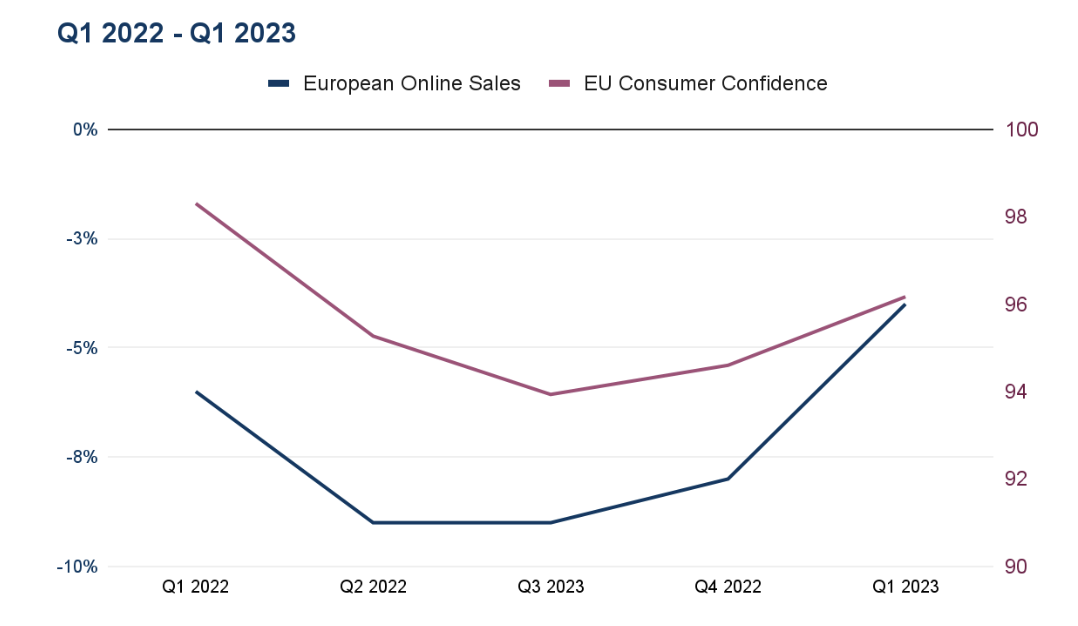The Salesforce Shopping Index, which analyses the shopping activity of almost two billion global consumers, revealed some interesting findings during the first three months of this year. Despite a 6% increase in digital traffic, global online sales declined 2% year-on-year (YoY) and online order volume was down 4%. The decline was predominantly driven by a slowdown in the U.S. -- where there was no growth in the quarter -- as consumer sentiment and discretionary spending contracted.
Meanwhile in Europe, the Q1 2023 data revealed some key learnings about European shopping. Here are the main findings.
European consumers’ purse strings are loosening
Digital commerce across Europe declined 4% YoY, with order volumes also down 4% in Q1, but despite the decline, the results revealed some noteworthy bright spots in the region. One of them being that although online sales declined across the region, the rate of decline slowed in Q1, compared to previous quarters.

Source: Salesforce Shopping Index, OECD (average per quarter)
To be clear, the data doesn’t signal a recovery in Europe, but it does suggest that consumers have perhaps adjusted to current economic conditions and are becoming more confident about spending again.
Indeed, data from the Organisation for Economic Co-operation & Development (OECD) shows that consumer confidence in Europe has been on the rise for the last few months. Ian Jindal, founder and Editor in Chief at Internet Retailing, sums up the landscape:
“Overall spending is still down, so this isn’t a rebound or a recovery. It seems like consumers are recovering from the inflationary shocks and post-christmas austerity and having realised that the winter was milder than expected, they are spending again.”
Some countries returned to positive territory
Compared to most countries across the globe, certain European countries saw some of the biggest growth in Q1. Spain leads the pack in Europe with an increase in both online sales and order volume of 19%. Interestingly, the data shows that average discount rates in Spain was 17% (representing a decline of 11% YoY), indicating that retailers in the region are achieving growth despite pulling back on the pricing and promotions strategies seen over the last year or so.
Elsewhere, Eastern Europe continued the positive growth trend seen consistently over the last two years, registering a 14% growth in both online sales and order volume. It is worth mentioning that consumers in the region seem to be leaning a bit more on credit. The use of credit cards in the region now represents 37% of all purchases, compared to 35% last year and 33% in 2021. In addition, the data shows an incremental increase in the proportion of transactions that were paid for using Finance (which includes options like Buy Now, Pay later).
France also gets a mention. Following five straight quarters of decline, online sales in France grew 4% YoY, with orders up 1% in Q1. That said, the average selling price (ASP) - meaning average price of a unit sold - increased 7% in the country and the average discount rate was 17%, down from 21% the year before. In other words, shoppers in France spent more but didn’t necessarily buy more.
Other countries with positive growth in the region include Belgium and Italy, both recorded digital commerce growth of 7% and 6% respectively, compared to the previous year.








